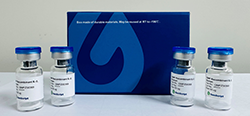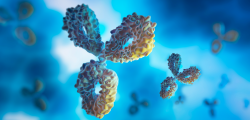Inflammatory bone resorption, especially bone loss caused by the abnormal activation of osteoclasts (OCs), has become an increasing health concern. As a natural anti‑inflammatory compound, cynarin has shown potential in the treatment of various inflammatory diseases; however, its role in inflammatory bone resorption remains to be investigated. The present study aimed to explore the therapeutic potential of cynarin in inflammatory bone resorption by focusing on its regulatory effects on OC differentiation, inflammatory responses and related signalling pathways. Our results showed that cynarin significantly inhibited bone resorption, reduced tartrate‑resistant acid phosphatase activity, and downregulated key ... More
Inflammatory bone resorption, especially bone loss caused by the abnormal activation of osteoclasts (OCs), has become an increasing health concern. As a natural anti‑inflammatory compound, cynarin has shown potential in the treatment of various inflammatory diseases; however, its role in inflammatory bone resorption remains to be investigated. The present study aimed to explore the therapeutic potential of cynarin in inflammatory bone resorption by focusing on its regulatory effects on OC differentiation, inflammatory responses and related signalling pathways. Our results showed that cynarin significantly inhibited bone resorption, reduced tartrate‑resistant acid phosphatase activity, and downregulated key OC differentiation markers (Atp6v0d2, Nfatc1, Dcstamp and Ctsk). RNA sequencing and western blot analyses revealed that cynarin inhibited mitogen‑activated protein kinase (MAPK) pathway activation, and that the MAPK‑specific activator anisomycin reversed this inhibitory effect. In addition, cynarin alleviated the inflammatory response by reducing reactive oxygen species levels and inhibiting the expression of inflammatory cytokines. More importantly, cynarin activated Nrf2 and enhanced the expression of antioxidant genes (Hmox and Cat). Micro‑computed tomography analysis revealed that cynarin significantly enhanced the bone structure in mice, as indicated by increased bone volume and trabecular number, and trabecular thickness. Histological analysis confirmed that cynarin inhibited the expression of OC markers (tartrate‑resistant acid phosphatase, receptor activator of nuclear factor κB and cathepsin K) and inflammatory factors (tumor necrosis factor‑alpha and inducible nitric oxide synthase), while promoting osteogenic markers (osteocalcin and RUNX2). Finally, cynarin‑treated mice showed enhanced Nrf2 nuclear translocation and inhibition of MAPK signalling. These findings revealed the multiple roles of cynarin in the treatment of inflammatory osteolysis and provided insights into its potential therapeutic mechanisms and targets.

































